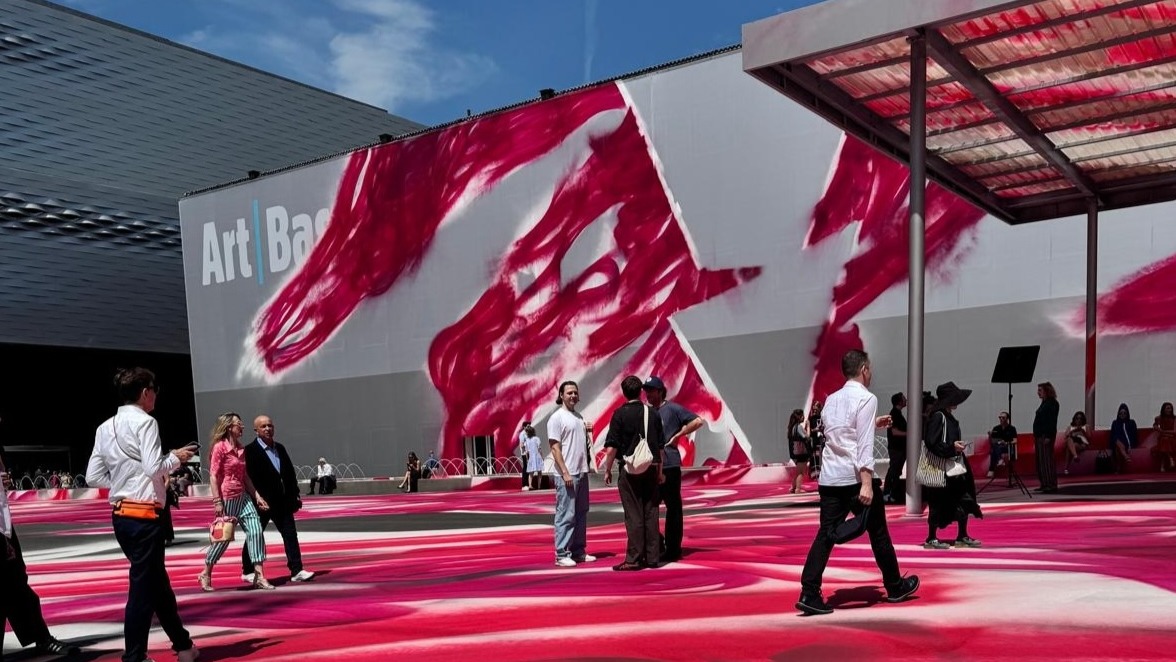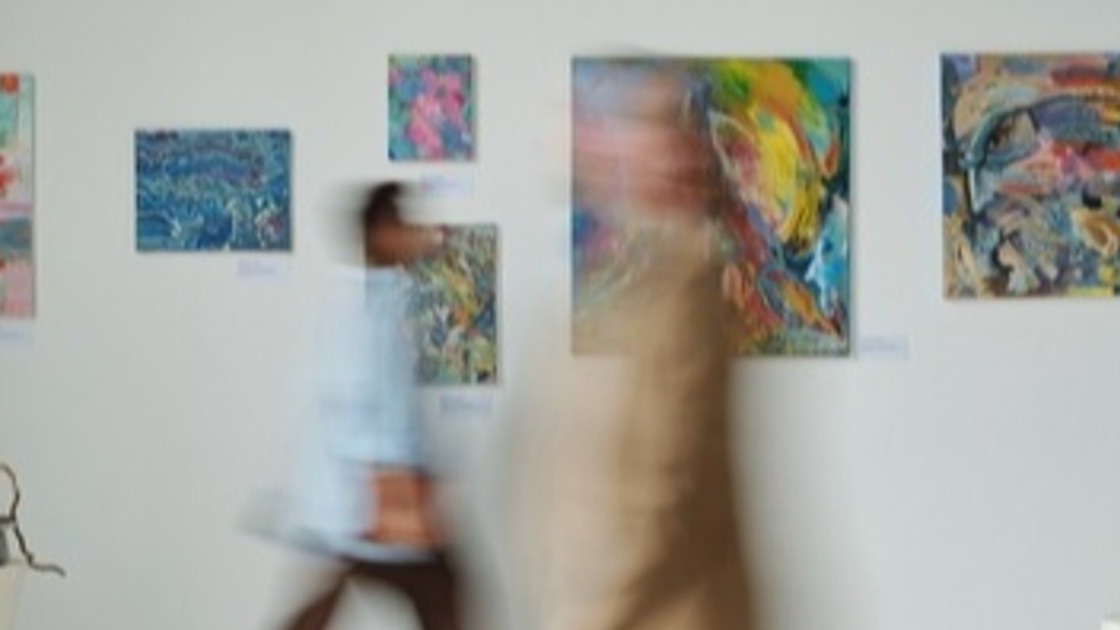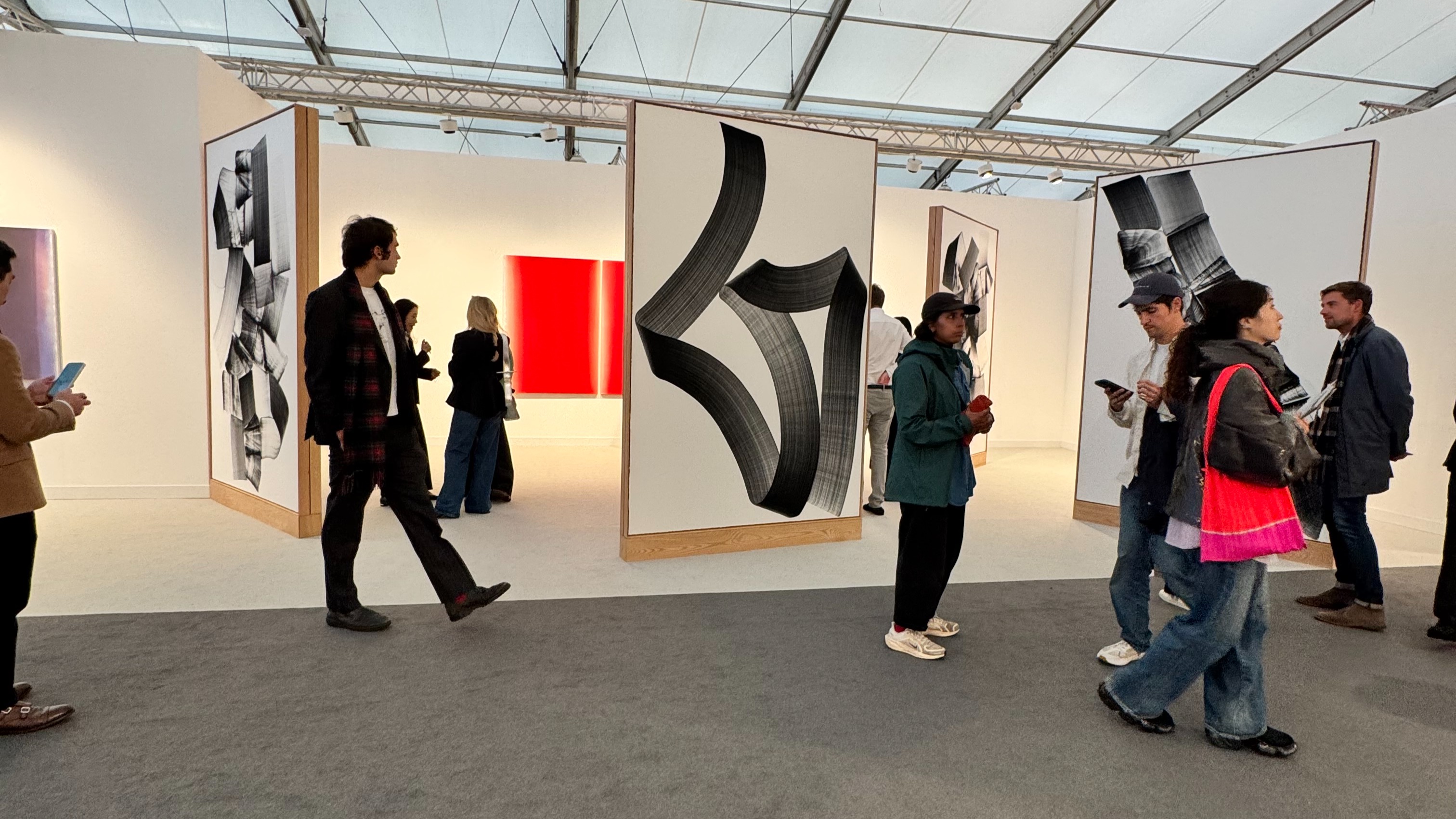
Art Basel 2025: A Subdued but Strategic Edition
This year’s 55th edition of Art Basel, held from June 19th to 22nd, 2025, at Messe Basel, demonstrated the international fair’s continued relevance, even as the global art market confronts mounting pressures. While the mood was less exuberant than in previous years, the fair showed its strength not in record-breaking sales, but in curatorial depth, institutional engagement and a clear shift in buyer strategy toward quality and stability.
Reshaping the Viewing Experience
Among the fair’s most talked-about highlights was Katharina Grosse’s monumental installation, CHOIR, which transformed Basel’s Messeplatz into a saturated visual field of white and magenta. Curated by Natalia Grabowska, the piece was both a public spectacle and a subtle meditation on transience, echoing the cautious tone of the broader market.
The Unlimited section once again offered collectors and institutions a chance to view large-scale works that defy traditional booth formats. Highlights included a luminous installation by Marinella Senatore and an immersive video piece by Candice Breitz, both exploring themes of collective memory and resistance. Meanwhile, the Parcours sector, curated by Stefanie Hessler, invited visitors to engage with Basel’s public spaces through 22 site-specific installations under the theme ‘Second Nature’.
This year also introduced a new initiative, ‘Premiere’, which focused exclusively on artworks created in the past five years. Emerging voices such as Lonnie Holley (Edel Assanti) and Lin May Saeed (Galerie Jacky Strenz) offered timely and politically charged work, underscoring the fair’s commitment to contemporary practice beyond the blue-chip mainstream.
A Market in Moderation
Despite global uncertainty, including the lingering effects of inflation, geopolitical instability and cautious spending among U.S. collectors, Art Basel 2025 still managed to deliver strong sales across several tiers. According to the UBS Art Market Report, the global art market contracted by 12% in 2024 to $57.5 billion, with notable weakness at the top end. Yet, Basel reflected a pivot in collector preferences rather than a lack of demand.
Preview day saw high-value transactions among familiar names. Annely Juda sold David Hockney’s Mid November Tunnel (2006) for a reported $13-17 million, while David Zwirner sold a 1955 Ruth Asawa sculpture for $9.5 million and a Gerhard Richter painting for $6.8 million. Hauser & Wirth found eager buyers for Mark Bradford and George Condo, while Thaddaeus Ropac confirmed multiple sales of works by Georg Baselitz and James Rosenquist near the €1.8 million mark. Pace Gallery, meanwhile, reserved a significant Picasso piece estimated at $30 million.
However, compared to 2024’s edition, this year saw only one publicly confirmed sale above $10 million in the first two days, down from four last year. This suggests a cooling of ultra-high-end momentum, likely influenced by macroeconomic caution and a reduction in U.S. collector presence due to ongoing trade tensions and tariff-related complications.
Collecting in a New Key
Dealers described the pace of the fair as ‘measured’ and ‘strategic’, with more emphasis on quality and long-term value than speculative buying. Risk appetite was subdued, with many collectors focusing on established names, such as Chagall, Magritte, Calder, Dubuffet and Rothko, and steering clear of lesser-known or high-concept emerging works unless presented by trusted galleries.
Interestingly, the more moderate pricing band (under $500,000) performed consistently well, reflecting a shift in buying behaviour toward accessibly priced works by mid-career artists. There was also a marked increase in the presence of collectors from Asia and the Middle East, which many galleries noted as essential to offset the absence of American buyers.
Cultural Impact Beyond Commerce
Beyond the booths, Art Basel 2025 made efforts to reassert its role as a cultural hub. The Art Basel Awards, launched this year in partnership with Hugo Boss, celebrated cross-disciplinary talent with 36 awards across visual art, curation, education and public engagement. This signals an evolution in the fair’s identity, not just as a market platform, but as a broader cultural institution.
Even the Art Basel shop experienced a viral moment, with exclusive Labubu artist editions selling out in under half an hour, demonstrating that even amid macroeconomic uncertainty, demand for collectible culture remains strong.
Final Thoughts
While Art Basel 2025 didn’t deliver a blockbuster financial narrative, it succeeded in showing that resilience in the art market isn’t just about numbers. It’s about curating meaningful experiences, spotlighting new voices and reconfiguring the collecting mindset. For galleries, collectors and artists alike, this year’s edition may be remembered not for its flash, but for its quiet clarity.
Sources:
Reuters: ‘Art Basel shows more mid-priced art to a sombre market’ (2025)
Financial Times: ‘Magritte takes Picasso’s crown — seven lessons from a tough year for the art market’ (2025)
Vogue Business: ‘Hugo Boss & Art Basel CEOs in conversation’ (2025)




